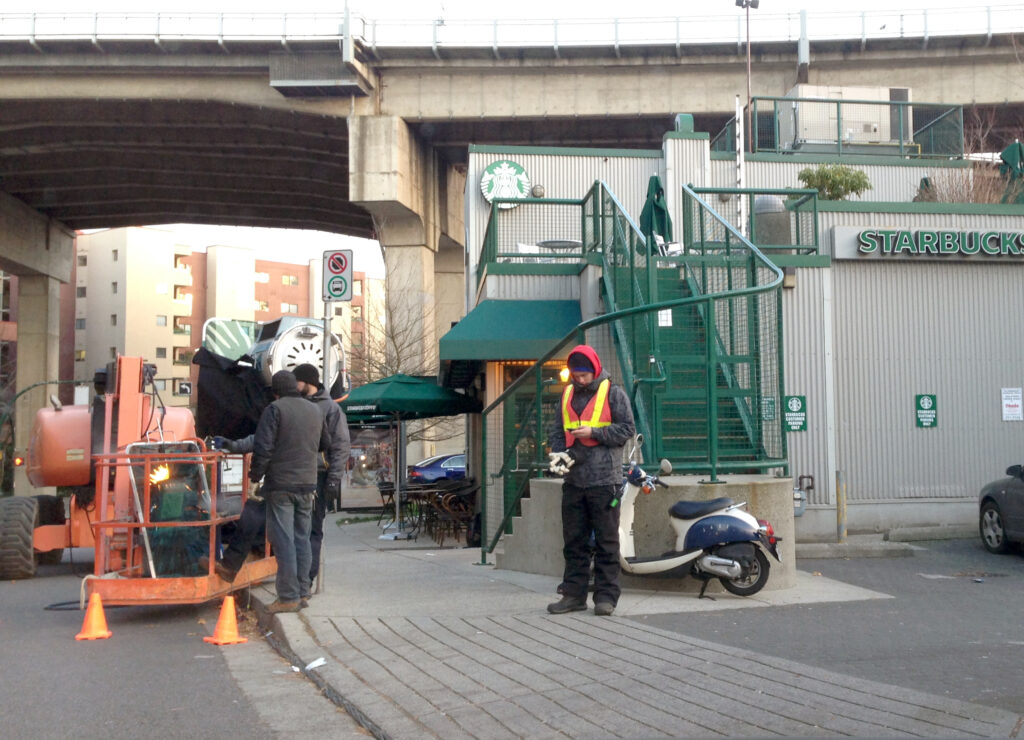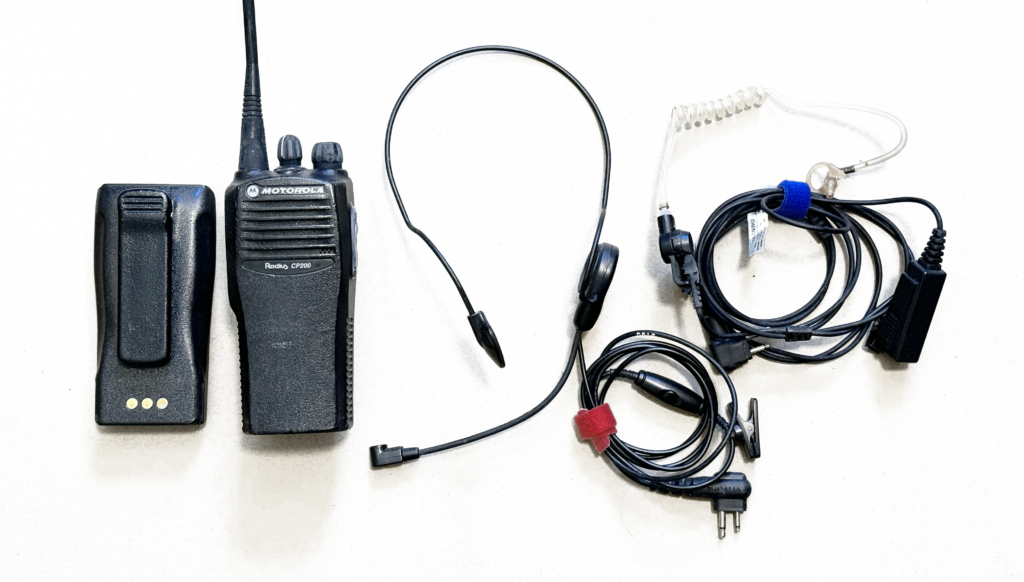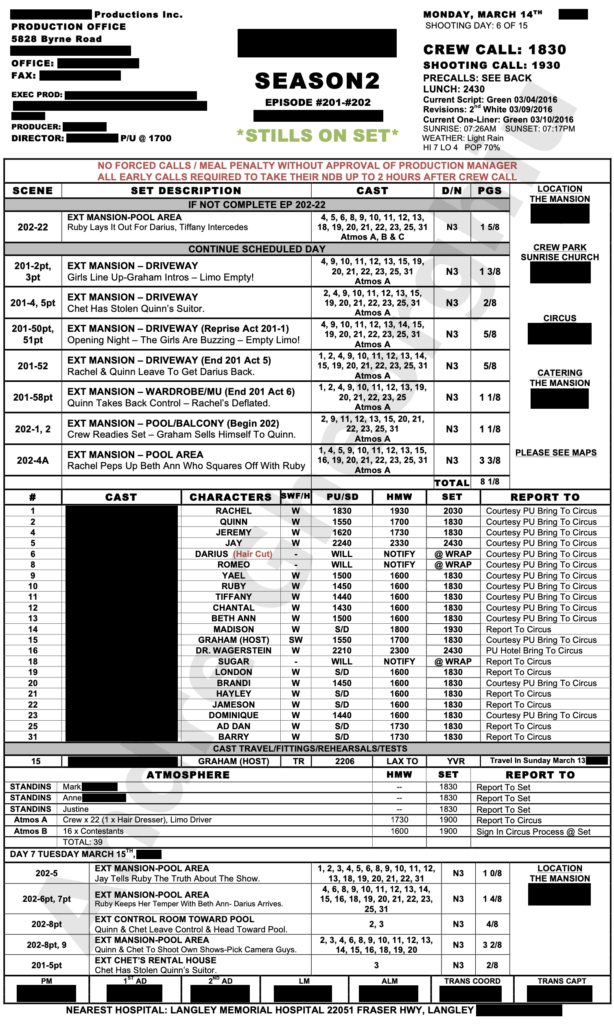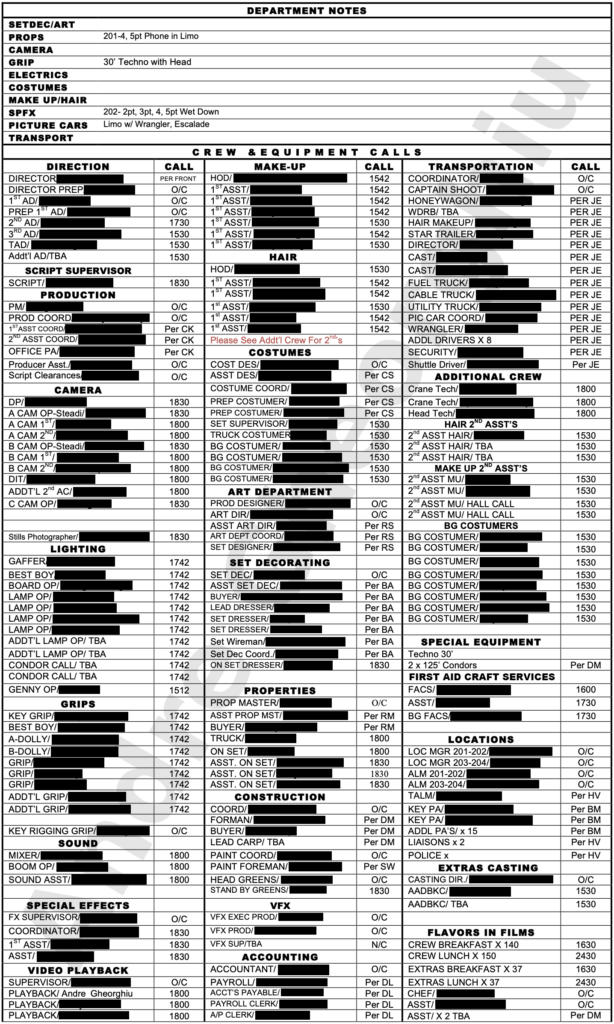All You Need to Master for Becoming the Ultimate On-Set PA
Embarking on a career in the film industry often begins with the role of a Production Assistant (PA). This entry-level position is crucial for the seamless operation of a film set and offers invaluable experience for those aspiring to advance in the field. This guide provides essential insights and practical advice to help you excel as a PA.
Let’s begin with perhaps the most crucial piece of advice and a well-known saying in the film industry: “If you’re early, you’re on time; if you’re on time, you’re late.” Whether you’re in the film world or not, these are words to live by, and they’re one of the many mantras of a production assistant, as emphasized by film industry veteran Andre Gheorghiu.
Understanding the Role of a Production Assistant
New P.A.s start with simple tasks, but duties grow more complex over time.
Lock-Ups
A lock-up is a P.A.’s post to keep unauthorized people out.
- Crew Parking Lock-Up: Guides crew to parking spots, maximizing space.
- Crew Lock-Up: Stops crew from entering shots or making noise, ensuring silence during takes.
A veteran once told me, “We’re here for the moments between ‘Action’ and ‘Cut’—everything we do supports that, so be silent and still when rolling.” On “Married Life,” my stomach rumbled during a quiet scene with Pierce Brosnan and Rachel McAdams, earning stares from the crew and teaching me the value of silence. - Work Truck Lock-Up: Guards pricey gear in trucks—leaving it unattended risks your job.
- Pedestrian Lock-Up: Keeps the public out, needing charm in busy areas.
- Traffic Lock-Up: Directs traffic with a vest and paddle, requiring certification and often police help.

Calling Rolls
P.A.s shout “We are rolling—quiet please!” when the 1st AD says sound is on, then “Cut! Resume working!” after the director ends the take, alerting everyone to filming status.
Other P.A. Tasks
Driving Locations Van: Moves gear and sets up safety markers.
Office P.A.: Manages office paperwork and calls.
Flyering: Hands out filming notices to locals.
Video Village Setup: Preps tents and monitors for crew.
Cleaning Locations: Clears trash to keep sites pristine.
Key Attributes of a Successful PA
Being on time
Show up early, find your ALM or Key P.A.. Don’t be on your phone for more than a quick minute. Don’t sit down unless you get the OK from your Key P.A., usually you can sit in certain loc-ups far from set where you are not in view of the crew.
The Importance of Set Etiquette
Good set etiquette is vital for your on-set experience. Poor etiquette marks you as inexperienced and can cost you your job. It’s about knowing when to approach crew members and when to stay quiet, blending in seamlessly.
Unspoken Rules of Set Behavior
Never approach actors preparing for scenes—don’t ask for photos or chat them up. In 25 years, I’ve never seen crew ask cast for pictures; save that for wrap parties. Even near craft services, stay professional—only respond if they speak first.
Photography on Set
Taking personal photos on set is forbidden. Props, wardrobe, and set dec take continuity shots, but as a P.A., you don’t have that privilege. On “Star Trek Beyond,” NDAs and secret sets like the USS Enterprise showed why leaks are fireable offenses—don’t snap or share anything.
Blending in on Set
Follow behavior standards to avoid seeming unprofessional. Don’t pitch scripts to directors or D.P.s unless the moment’s right. With actors and key crew, speak only when spoken to, but help organically if they need it.
Learning by Observing
As a new P.A., master your job by watching and following orders. Ask P.A.s, the Key P.A., or the A.L.M. for advice. Earn trust for lock-ups near set to observe production and meet people naturally.
Networking Without Overstepping
Film is competitive—don’t overshare ambitions that sound threatening. Be patient, learn the ropes first, and build rapport gradually. Next, we’ll cover film jargon and walkie-talkie etiquette to boost your on-set confidence.
Walkie-Talkie Etiquette
Mastering walkie-talkie use shows experience on set. Clear, confident communication puts you ahead. Each department has a channel, listed on the call sheet. Channel 1 is for the 1st AD’s roll calls—keep it clear for lock-ups and silence. Chat channels (2 or 3) handle non-urgent talks, like requesting a break: “Matt, locations,” then switch to 2, “Andre here, need a 10-1, can someone cover?” Pause before speaking to avoid cutoffs. Know department channels for direct contact.
Common Walkie-Talkie Jargon
Code Red: Evacuate due to emergency.
10-1: Bathroom break.
10-2: Longer bathroom break (number 2).
Go for [Name]: “I’m here” (e.g., “Go for Andre”).
Copy That: Understood.
Standby: Busy, wait a sec.
Flying In: Bringing a requested item.
Lock It Up: Quiet and still for rolling.
Hot Set: Don’t touch—continuity matters.
Bogey: Unauthorized person on set.

Other P.A. Responsibilities
- Office P.A.: Works in the production office, handling paperwork, answering phones, and assisting the production team with clerical tasks.
- Flyering: Distributing film notices to inform neighborhoods about upcoming shoots and potential disruptions.
- Setting Up Video Village: Assisting in setting up tents, heaters, or fans where the director and key crew members monitor scenes.
- Keeping Locations Clean: Handling garbage disposal, sweeping cigarette butts, and ensuring locations are left in pristine condition.
- Driving a Locations Van: Transporting equipment, setting up tents, and placing safety pylons.
The Importance of a Car and Proper Gear
Having a personal vehicle as a P.A. makes a huge difference, in fact, I’d go as far as saying it is absolutely essential. Film shoots happen in remote locations or at odd hours when public transit isn’t an option. Relying on coworkers for rides can make you seem unprepared.
Always carry:
- A rain jacket, extra pair of shoes or rain boots, and extra socks and additional warm clothing (In the trunk of my car I kept multiple change of clothing for any weather condition)
- Pens, sharpies, and notepad
- Walkie Talkie headset
- Small Crescent wrench and or a multi-tool like a leatherman
- Sunscreen and bug spray
- A tool belt is a big bonus, somewhere to hook your walkie talkie to and store you pen and notepad.
- A lighter
- A flashlight and/or headlamp
- A phone charging cable and battery pack
- A backpack to keep necessities in with you as sometimes you just can’t get to your car at crew park where you may have more changes of clothing
Having these items makes you more valuable and opens up networking opportunities.
Practical Tips for Excelling as a PA
- Stay occupied: A busy PA is a valuable PA. Always look for tasks that need attention.
- Move with purpose: Even if you’re heading to a break, walk as if you’re on an important errand.
- Be attentive: Listen carefully to instructions and ask for clarification when needed.
- Dress appropriately: Wear comfortable yet professional attire suitable for various weather conditions and physical activities.
Understanding the Call Sheet
In the film industry, the call sheet is a crew member’s most critical tool, packed with essential details for the day’s work. It’s a daily schedule outlining crew call, shooting times, production contacts, scenes, locations, actors, extras, parking, base camp, catering, weather, script revisions, safety info, and key crew phone numbers. The back lists departmental notes and crew details with individual call times.


Written by the 2nd AD in collaboration with the 1st AD, call sheets are handed out at wrap once the next day’s call time is set, adjusting for turnaround rules. For day-calls, grab one from the Trainee AD or production office. Knowing how to read it helps you identify key players, track the schedule, estimate wrap time, and stay connected with superiors, proving your value on set.
Conclusion
Starting as a Production Assistant is a pivotal step toward a rewarding career in the film industry. By embracing the responsibilities of the role, honing essential skills, and maintaining a professional attitude, you lay a strong foundation for future advancement. Remember, the dedication and effort you invest as a PA can open doors to numerous opportunities in the world of filmmaking.
For an in-depth look at film departments, positions, gear, and more, explore Lights, Camera, Hired! A Guide to Film Industry Jobs.
Hi, this is a comment.
To get started with moderating, editing, and deleting comments, please visit the Comments screen in the dashboard.
Commenter avatars come from Gravatar.